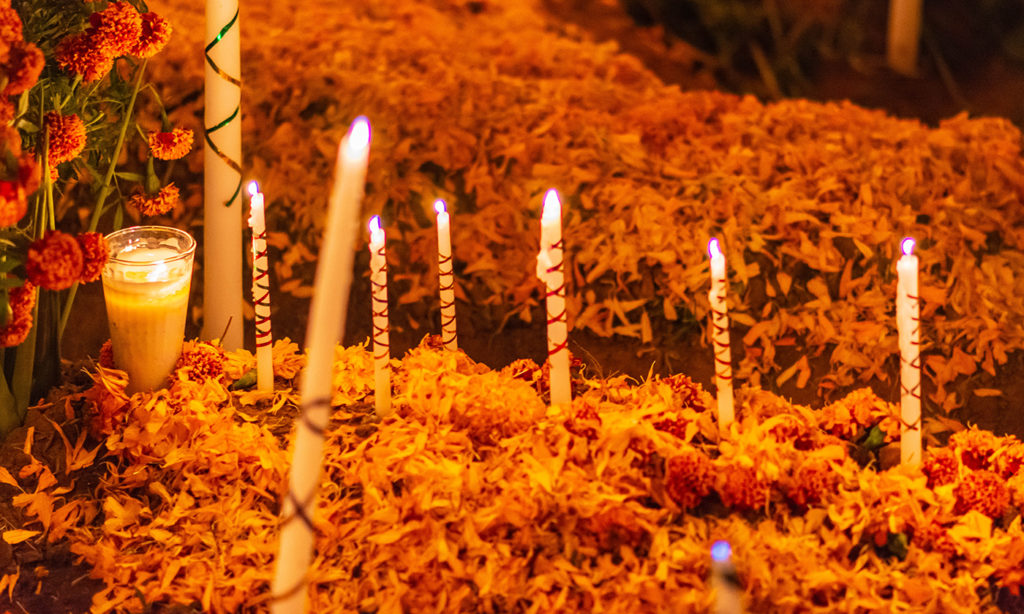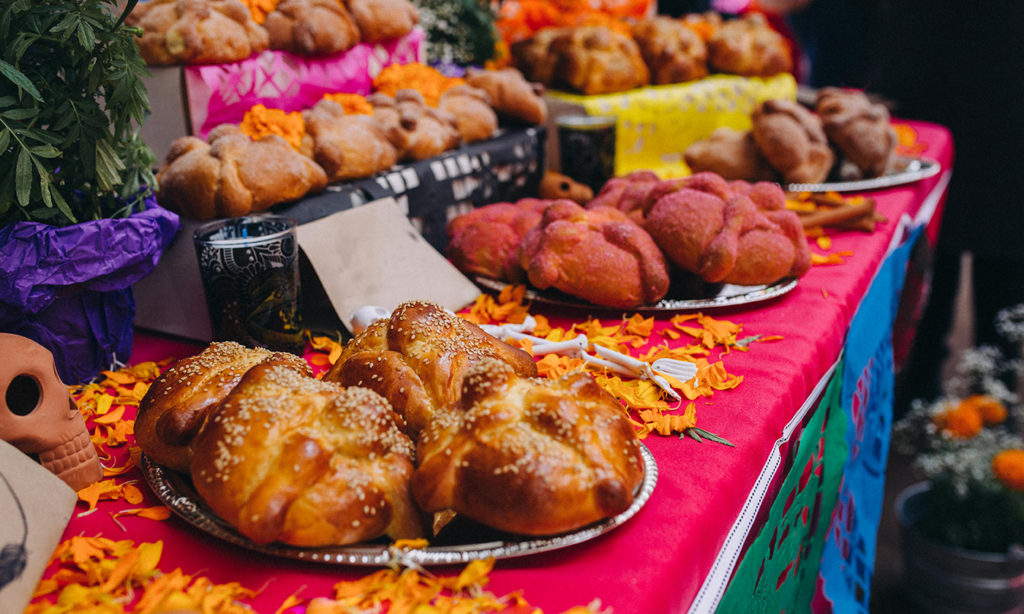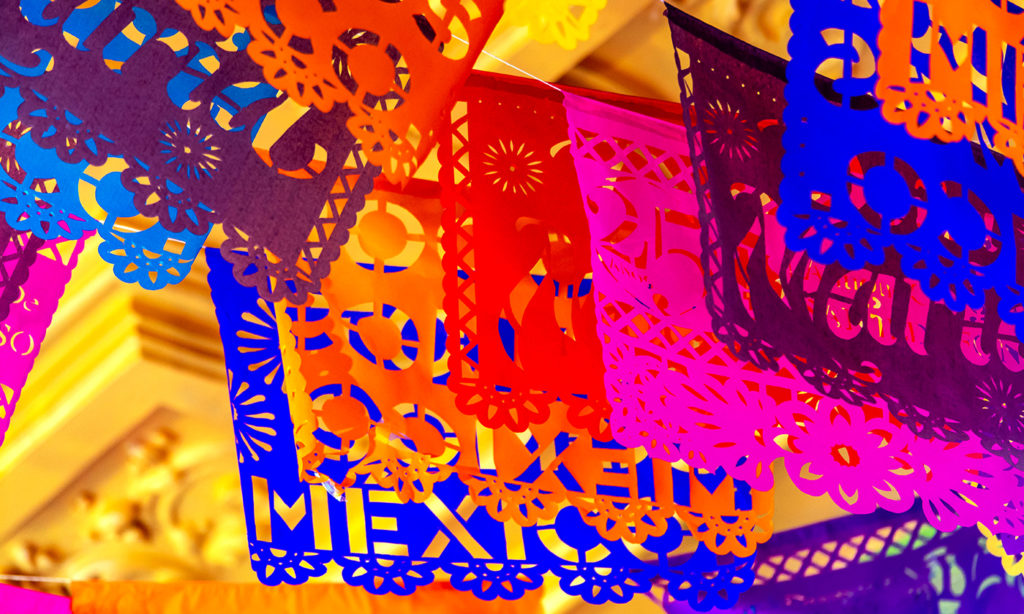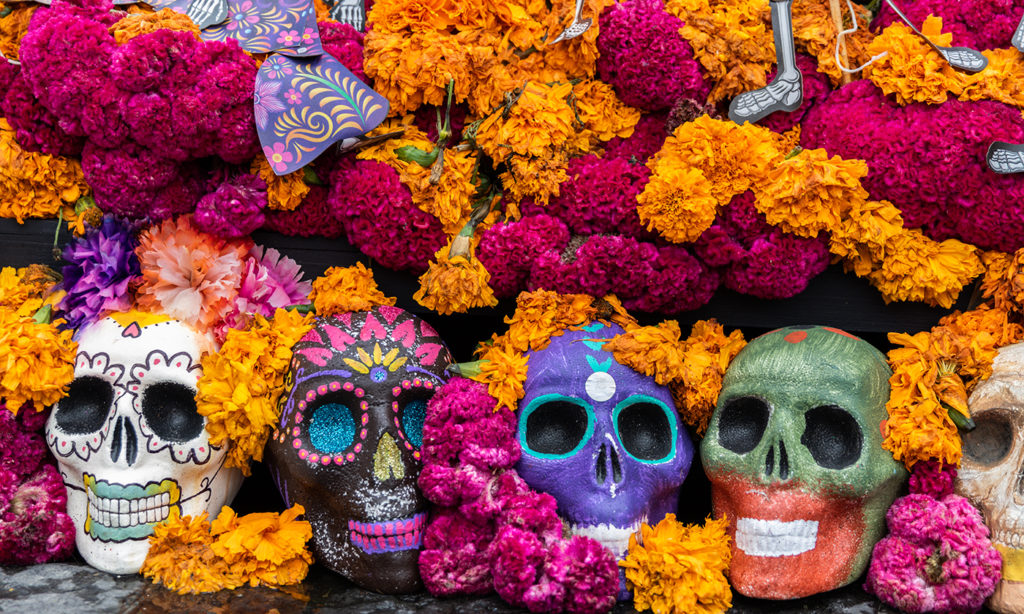Opinion Advocates for ideas and draws conclusions based on the author/producer’s interpretation of facts and data.
How Celebrating the Day of the Dead Abroad Brought Me Home

This story comes to us from Feet in 2 Worlds, a project that brings the work of immigrant journalists to digital news sites and public radio. It was originally written in Spanish. Read the Spanish version here.
Death has haunted us all year long. La Catrina, the Mexican icon of death, has decided to dress as a virus. She closed borders, surprised us from within and turned us into her mirror. Here we are, digging her grave and ours. What if I become her? What if I go with her? Who is going to cry for me? My family is on the other side of the wall thinking the same thing. They cannot cross: Border restrictions have forced us to be separated. It is loneliness that we fear even more than COVID-19. Life is scarier than death. I’m afraid. Aren’t we all?
Death does not smell like marigolds, nor does it paint itself as a calavera, a skull. There is no mariachi in the loss nor joy in the pain. No, death is very cruel and it stinks; it is the beginning of an absence that cramps the heart and numbs the mind. Death is, sometimes, the beginning of oblivion. That’s why we laugh and tease her, we dress and sing to her, because even in grief there is irony, and in the mischief, there is comfort. I learned this far away from my native country, Mexico. Living in the United States, I came to understand, through foreign eyes, the ancient Mexican tradition of honoring those who have left, those who emptied our eyes and filled our hearts.

I am from the North of Mexico, from a village where we all cry in the same cemetery and sing and dance with the bands that honor our dead loved ones. We don’t hold vigils or build altars; we don’t cook or decorate. We are simple: carnations on the tombs, sugar cane on our lips, and a rosary in our hands. Thus, we spend every Día de los Muertos running from one grave to another, eating and praying—all the rituals that narrow the abyss that we have widened.
In Mexico, the desert is a border. It is the space that separates how we deal with death. For those of us who grew up in the arid north, candles signify life and are blown out after burials, and the tradition ends with a fist of earth covering the coffin. That’s how they raised us, far away. We are the North: we have one foot in Mexico and one in the U.S. We don’t do calaveras, we celebrate Halloween. We are the sarcastic sons and daughters of history and the bastards of tradition, we are the black sheep that always denied the flock, because we always liked the herd on the other side—until we crossed the border, or a pandemic hit us.

Something happens abroad that invites nostalgia. One stops being from the North. We are all Mexicans now.
In the United States, I tried el pan de muerto, the bread of the dead, and sugar skulls for the first time. Here, where they speak more English and listen to Reggaeton, I made peace with La Catrina and drew her on my face. Here, with the exalted heart of resurrected patriotism, I wrote my first calaverita, poems that mock death. Blessed longing made me come home to these traditions.
I had to leave my country to understand that I had Mexican poems and faith in my blood, but I had never felt them throbbing with emotion, propelled by absence. And then, at the right time, I understood the hug to infinity that is represented by an altar for the dead. How ethereal and how eternal. How beautiful!

This is the first time I put my dead father’s picture with my tata, my grandpa, next to some candles and flowers in my house. I speak to them. I tell them I imagine what they would like to have for dinner, and I explain to my children that I do not know everything about them, because our time together was very brief.
Then I put up more photos. Last year La Huesuda, the bony death, returned and took three others very close to my heart. I pray for them. I caress them in my memory. It took me a long time to do this. I had a slow awakening, perhaps because I grew up always talking about and feeling death, and that’s why I got used to the absence. I protected myself in life and let go of the idea of an expected reunion in the beyond.

I didn’t wake up to this reality alone. More than 1.17 million families around the world have added a death to their altar because of the pandemic. In the United States, there are more than 226,000 dead, and in Mexico, more than 90,000. It is too much. These people have been killed by a virus, politics, and perhaps our indifference. We, the living, have not been saved either. There is no vaccine against grief.
I take two steps back, and then I see it. It is not death that smells like the flowers we call cempasuchil, but memories. It is not crying that sounds like mariachi, but the melody of Amor Eterno that hums in our brains when we visit the cemetery. It is not the face of La Parca, the Grim Reaper, that we paint, but the features of those we loved most. All this I learned far away from Mexico.

|
Maritza L. Félix
is an award-winning freelance journalist, producer, and writer in Arizona. She is the founder of Conecta Arizona, a news-you-can-use service in Spanish that connects people in Arizona and Sonora primarily through WhatsApp and social media. Maritza’s work has been published in major newspapers in Mexico and other countries and broadcast on Univision and Telemundo.
|







